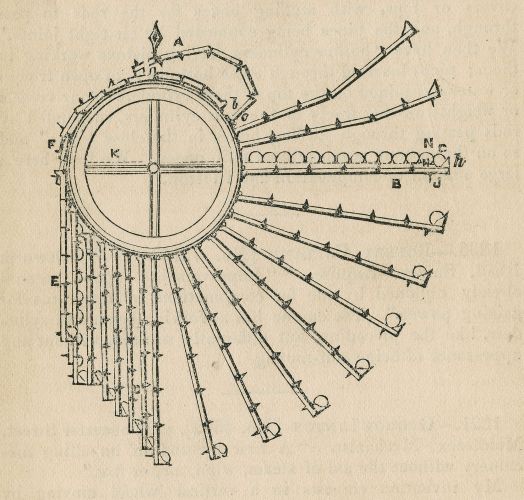Error
New method of impelling machinery without the aid of steam, water, wind, air, or fire
On 22 December 1821, George Linton, a mechanist with a workshop on Gloucester Street in Middlesex, obtained a patent for the invention of a perpetual overbalanced wheel driven by gravity. On the rim are mounted articulated levers that end with a spoon into which falls a sphere from the adjacent inclined trough. Each spoon carries a sphere, whose mass increases the moment from the rotation side with the extended lever in the descent phase. During the ascent phase, instead, the lever remains perpendicular to the centre of rotation until the arm’s anchorage point reaches the height of the axis. Then, thanks to its hinged modular structure, it wraps around the rim, thus maintaining a shorter lever arm with respect to the other side and so generating that break in the equilibrium between moments that should induce the perpetual rotation of the wheel. The spoons transport the balls to the inclined transversal trough, where they are unloaded, thus lightening the system in the upper passive part of the rotation, before rolling again from the opposite side. Linton argues that the principle on which his machine is based is applicable to a series of vertical wheels: in this way the rotary system would acquire sufficient power for a practical application.


